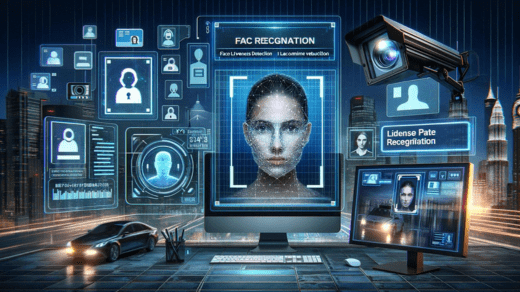
Face Recognition, Face Liveness Detection, ID Document Verification, KYC solution, License Plate Recognition
In an era where security is paramount, businesses and organizations worldwide are increasingly turning to advanced technological solutions to ensure the integrity of their operations. Among these solutions, Face Recognition, face liveness detection, ID document verification, and Know Your Customer (KYC) solutions stand out as pillars of modern security protocols. In this comprehensive guide, we delve into the intricacies of these technologies, exploring their functionalities, benefits, and applications across various industries.
Face Recognition: Redefining Security Standards
Face recognition technology has revolutionized the way we authenticate identity, offering a robust and efficient method of identification. By analyzing unique facial features, such as the distance between the eyes, nose, and mouth, face recognition systems can accurately match individuals to their digital profiles with a high degree of precision.
How Face Recognition Works
Face recognition operates on the principle of biometric authentication, leveraging algorithms to map facial characteristics and create a unique template for each individual. These templates are then compared against stored data to verify identity.
Applications of Face Recognition
From access control and attendance tracking to fraud prevention and law enforcement, the applications of face recognition are diverse and far-reaching. In corporate settings, it facilitates seamless employee authentication, while in law enforcement, it aids in the apprehension of suspects and the identification of missing persons.
Face Liveness Detection: Enhancing Security Against Spoof Attacks
While face recognition offers a reliable means of identification, it is susceptible to spoof attacks wherein malicious actors use photos or videos to deceive the system. Face Liveness Detection addresses this vulnerability by verifying the liveliness of the subject, ensuring that the facial data being analyzed is from a real person and not a fraudulent representation.
The Importance of Liveness Detection
By incorporating liveness detection into facial recognition systems, organizations can significantly enhance their security measures, mitigating the risk of unauthorized access and fraudulent activities.
Techniques for Liveness Detection
Various techniques are employed for liveness detection, including motion analysis, 3D depth sensing, and infrared imaging. These methods enable the system to distinguish between live subjects and static images or videos.
ID Document Verification: Validating Identity with Precision
In addition to facial recognition, ID document verification plays a crucial role in identity authentication, particularly in scenarios where physical documents are required for verification.
Advantages of ID Document Verification
By digitally scanning and analyzing identity documents such as passports, driver’s licenses, and national IDs, organizations can validate the authenticity of the presented credentials, minimizing the risk of identity theft and fraud.
Integration with Facial Recognition
ID document verification can be seamlessly integrated with facial recognition technology to create a multi-layered authentication process, ensuring the highest level of security and accuracy.
KYC Solutions: Compliance Made Easy
For businesses in regulated industries such as finance and e-commerce, Know Your Customer (KYC) solutions are essential for compliance with anti-money laundering (AML) and counter-terrorism financing (CTF) regulations.
Streamlining Customer Onboarding
KYC solutions automate the process of verifying customer identities, enabling businesses to onboard new clients quickly and efficiently while maintaining compliance with regulatory requirements.
Enhancing Fraud Detection
By cross-referencing customer data against watchlists and sanctions databases, KYC solutions help detect and prevent fraudulent activities, safeguarding businesses from financial losses and reputational damage.
Conclusion
As security threats continue to evolve, leveraging advanced technologies such as face recognition, face liveness detection, ID document verification, and KYC solutions is paramount for safeguarding sensitive information and mitigating risks. By implementing these technologies effectively, businesses can enhance their security posture, streamline operations, and build trust with customers and stakeholders.







